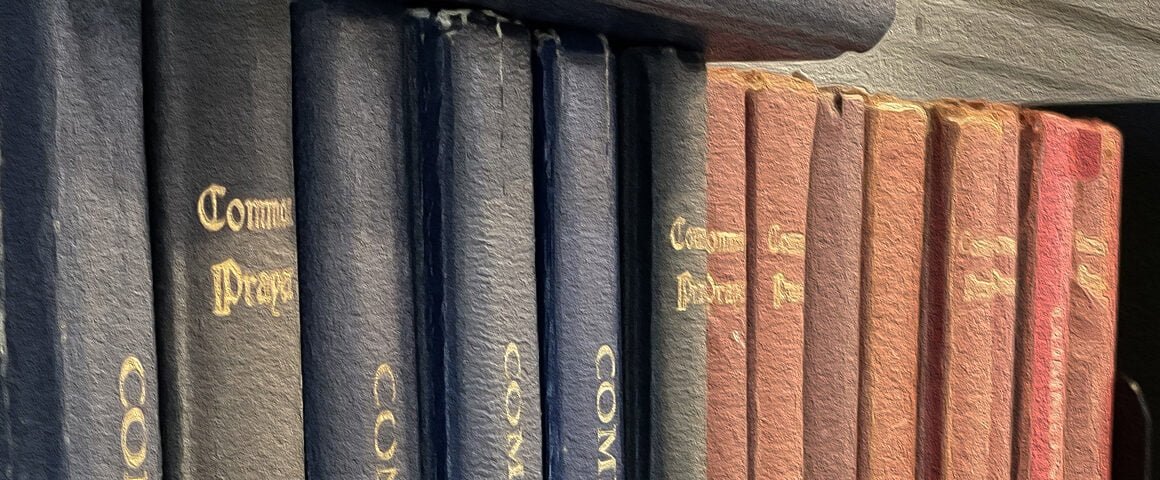As I have noted previously, Cranmer’s Eucharistic liturgy of 1552 had a distinctive shape – Law-Gospel-Repentance-Supper-Thanksgiving – which was retained for most Anglican rites down to the middle of the twentieth century. The main, and for almost two hundred years the only, exception was that of the Scottish Episcopal Church, which was a hybrid of Cranmer’s 1552 shape for the Liturgy of the Word with that of the 1549 Book of Common Prayer for the Liturgy of the Altar. Given its indebtedness to the Scottish BCP, one might have thought that the American Prayer Book would have been far closer to the Scottish model than is in fact the case. In truth, the 1789 BCP Communion Order is that of 1662, but with the 1552 Prayer of Consecration removed and replaced with a version of the 1764 Scottish Prayer of Consecration, which is a remodeling of the 1549/1552 material along the lines of the anaphora of the Fourth-century Pseudo-Clementine liturgy. The 1892 revision of the American BCP was a matter of rubrics, and the 1928 BCP, although it made some superficially “catholic” changes to the Communion Order, such as moving the Lord’s Prayer to its traditional position after the Prayer of Consecration, retained Cranmer’s shape. This means that the 1928 BCP Eucharistic rite, for all that it *looks* like an Anglo-Catholic liturgy, remains an Evangelical (Protestant) order.
Anglican Reformed Criticisms
Anglican Reformed criticisms of the ’28 Prayer Book as far as they relate to the Communion service are usually directed towards the vague and unsatisfactory commemoration of the faithful departed in the Prayer for the Church, the Prayer of Consecration, and the use of the Agnus Dei.
Of the three, the last is the most easily disposed of – the Agnus Dei is not ordered to be used by the 1928 BCP as the rubric reads “Here may be sung a hymn” without specifying the text.
The complaint against the Prayer for the Church is a little more significant. For my own part, I find it a little weird that such an ambiguous phrase was used, rather than simply restoring the 1549 text with or without the reference to “the holy, patriarchs, prophets, apostles, and martyrs.” As the text stands it can be taken as anything, possibly a prayer that we may after death receive that clarity of vision that St Paul writes of in 1 Cor. 13. Unfortunately, folks attempt to read the doctrine of Purgatory into it, and the text is vague enough that they can make the accusation stick. However, the honest course is to read it in the context of the teaching of Article 22, and of the 1662 BCP from whose teaching the framers of the American BCP had no intent to depart.
Apart from a certain degree of repetitiveness between the latter part of the Prayer of Consecration, and the Post-Communion thanksgiving, the only justifiable criticisms are the position of the Invocation and the wording. Although the modern Roman Rite and the 1549 BCP both place the epiclesis before the words of institution, it must be said that the Roman Canon lacked a developed Epiclesis for most of its history, and, to some extent, the 1549 rite was experimental. The structure of the American Prayer of Consecration is comparable with that of some older Reformed liturgies, in that it places the words of institution before the prayer for the Holy Spirit. The “unhappy” part of the Invocation is that it prays for the Holy Spirit to descend on the gifts, and not on the communicants too. To quote a modern Reformed example from the (post-1934) Reformed Church in the United States:[1]
Merciful God and Father, we beseech You that in this supper, in which we cherish the blessed memory of the bitter death of Your dear Son Jesus Christ, You will so work in our hearts by the Holy Spirit that with true confidence we might give ourselves up more and more to Your Son Jesus Christ, in order that our burdened and contrite hearts, through the power of the Holy Spirit, may be nourished and refreshed with His true body and blood, yes, with Christ Himself, Who is true God and man, the only heavenly bread. We pray that we may no longer live in our sins, but that Christ may live in us, and we in Him, so that we may truly be partakers of the new and everlasting testament, the covenant of grace. We do not doubt that You will forever be our gracious Father, never again imputing our sins to us, but providing us with all things necessary for body and soul, as Your dear children and heirs.
The older pre-1934 RCUS liturgy, which was drawn up at Mercersburg in the 1850s, is even closer. This may be because Schaff, Nevin, and Harbaugh recognized that the Prayer Book was part of the same Reformed tradition as the RCUS – a tradition which derives from Lutheran Philippism as much as it does from Strassburg, Zurich, and Geneva.[2] The older version of the prayer reads:
Almighty God, our heavenly Father, send down, we beseech thee, the powerful benediction of thy Holy Spirit upon these elements of bread and wine, that being set apart now from a common to a sacred and mystical use, they may exhibit and represent to us with true effect the body and blood of thy Son Jesus Christ; so that in the use of them we may be made through the power of the Holy Ghost, to partake really and truly of his blessed life, whereby only we can be saved from death and raised to immortality at the last day. Amen.
Theologically, this is like the invocations used in the proposed 1928 Prayer Book of the Church of England, and the 1929 Scottish Liturgy, though the latter, unfortunately, implies a localized presence in the elements, which is not Reformed. The English version, however, reads:
Hear us, O merciful Father, we most humbly beseech thee, and with thy Holy and Life-giving Spirit vouchsafe to bless and sanctify both us and these thy gifts of Bread and Wine, that may be unto us the Body and Blood of thy Son, our Saviour, Jesus Christ, to the end that we receiving the same, may be strengthened and refreshed both in body and soul.
You will note that the English text safeguards the teaching of Articles 28 and 29 on the nature of the Eucharistic Presence.
Still a Protestant liturgy
Although there are some unfortunate slips in the 1928 Communion Service it remains a Protestant liturgy like its predecessors of 1892 and 1789. The problem is not so much teaching as propaganda. Because the 1928 text makes some SUPERFICIAL concessions to the historic placement of elements such as the Lord’s Prayer in the Eucharistic rite, Anglo-Catholics have claimed the 1928 as their own, whilst in practice preferring to use the American and Anglican Missals which are fully compliant with their theological position.[3]
At the end of the day, the 1928 BCP Communion service is an authentic expression of the Reformed teaching of the English Church as contained in the Articles of Religion. No liturgy is perfect, and the dangers that we run into searching for an unobtainable perfection outweigh the benefits of any revision. We also need to be wary of wanting the liturgy to do theology. Good liturgical forms reinforce catechesis and preaching, but they cannot replace it.
Notes
- The present-day RCUS is the Eureka Classis of the old German Reformed Church in the United States. At the 1934 merger with the Evangelical Synod of North America, the Eureka Classis, which consisted mainly of Volga Germans, opted not to merge with the Unionistic ESNA and formed a continuing Church. In the last thirty years or so they have become more closely aligned with the Dutch tradition within the Reformed Faith, adopting the Belgic Confession and the Canons of Dort alongside the longtime German Reformed standard of the Heidelberg Catechism. The old RCUS had been founded in the 18th century by immigrants from the Palatinate, Hesse, and Nassau who came to North America to escape the War of the Spanish Succession and other conflicts between France and Austria. ↑
- The German Reformed have a complicated history with some being products of the Philippist side of Lutheranism who decided to turn Reformed rather than embrace the Gnesio-Lutheran version of Lutheranism, which group included the Rhine Palatinate, Bremen, and Hesse. Others became Reformed through a process known as ‘the Second Reformation’ but in Brandenburg and Prussia, only a minority converted to the Reformed Church. The bulk of the population remained Lutheran, which set the stage for the Prussian Union of Church (1817) once Pietism and Rationalism had loosened up the confessional boundaries. ↑
- “The American Missal” and “The Anglican Missal (American Edition)” are basically the BCP liturgy embedded in the context of the private prayers of the Tridentine Missal, which alters the theology quite considerably. Hence the old joke about the Anglo-Catholics being prepared to fight to the death for the 1928 Prayer Book provided they never actually have to use it. ↑





'The 1928 and Cranmer’s Shape' has 1 comment
July 29, 2023 @ 8:17 pm Fr. Richard E Desroches +
A fine piece of writing upholding the 1928 BCP in the this day of a plethora of Prayer Book’s being available for every liturgical flavor.